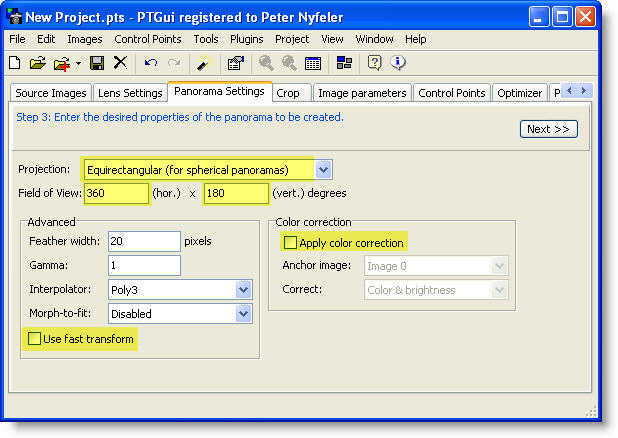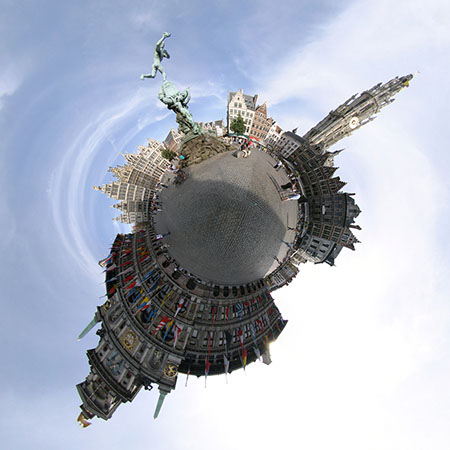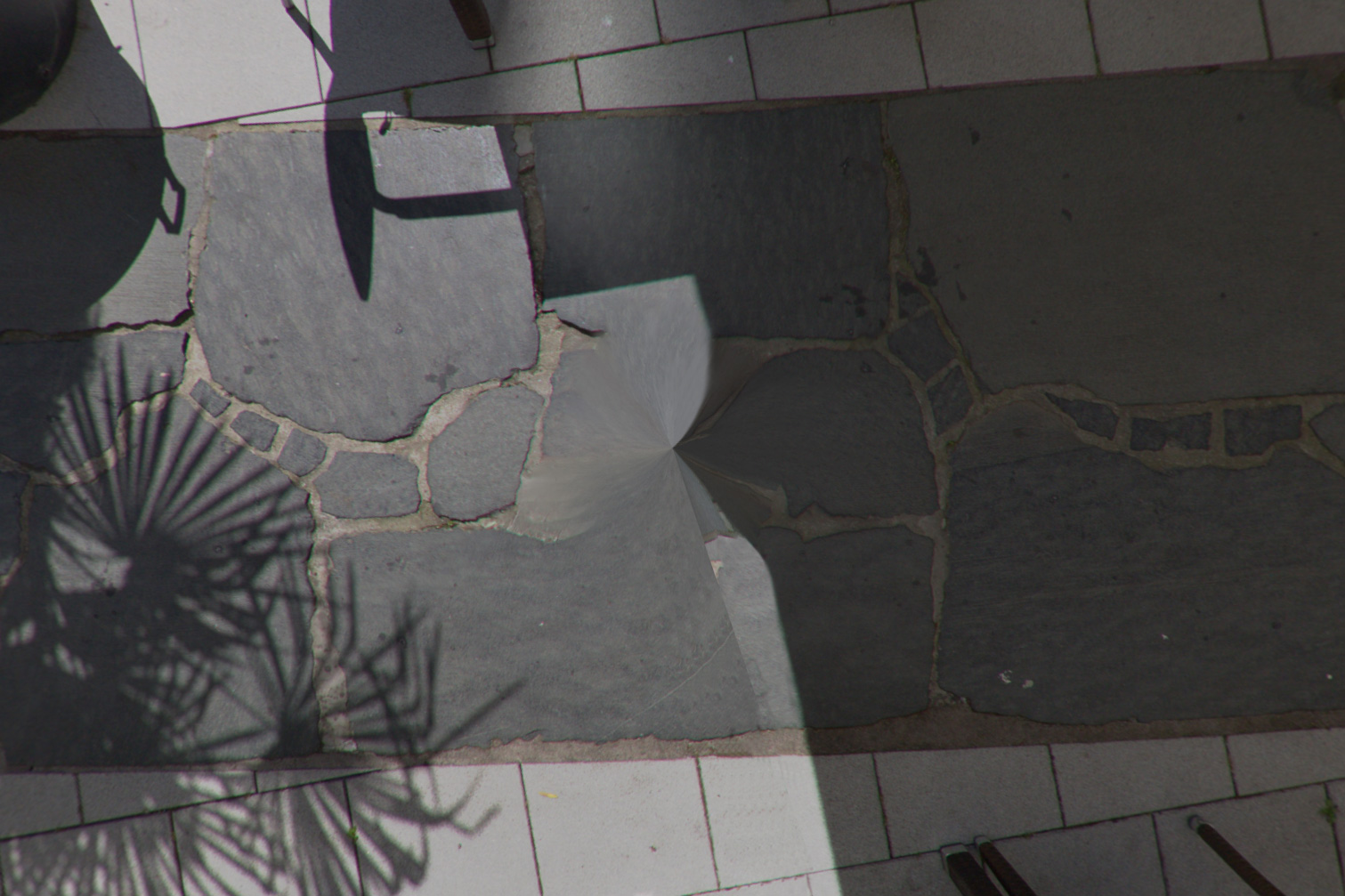

- #Ptgui nadir viewpoint manual#
- #Ptgui nadir viewpoint upgrade#
- #Ptgui nadir viewpoint full#
- #Ptgui nadir viewpoint pro#
- #Ptgui nadir viewpoint free#
The massive performance gain in PTGui 10 by using the gpu surprised me and shows what is possible, if you program a tool in the right way. I did a comparism with PTGui 10 and 9, Hugin,ICE,Panorama Studio and Lightroom 6 on stitching speed. Not only speed was compared but i also tried to judge the qualitiy of the stitched panorama image. In addition i compared those tools offering a web export the exported files to upload to your website. To do the comparism all tools hat to stitch a sphere panorama with 17 images including the nadir shot and a big one, multiple row panorama consisting of 170 images. All base images to stich the panorama where 16-bit Tiff files.
#Ptgui nadir viewpoint pro#
The tool is with costs and is available in a regular and a pro version. If you want to use viewpoint correction to get rid of the tripod without the need for retouching the image you’ll need the pro version. As stated in my blog post both versions do a good job on both panoramas.
#Ptgui nadir viewpoint manual#
#Using mask tool in ptgui pro manual#Ĭomparing the stitching qualitiy without manual corrections like additional control points Panorama Studio seems to be a little bit better. The tool offers a webexport but even in version 10 a flashversion is generated by default. There is no option in the tool to do the webexport with the flash file. At least you can delete the link to the flash manually in the player and just use HTML5. This tool too offers a regular and a pro version. Because of the pretty low price compared to PTGui you should get a pro version right away. If you want to use viewpoint correction you have to have the pro version just like in PTGui. Compareing the price and the quality of the stitched images Panorama Studio sure is an alternative to PTGui. And talking about speed, the tool doesn’t beat PTGui 10 but its faster than PTGui 9 and makes second place. Hugin is open source and just like PTGui the tool offers masks and viewpoint corrections. With this there are almost no wishes left. The biggest disadvantage is the very low speed. I cancelled stitching the bis panorama consisting of 170 images because even after waiting 50 min.
#Ptgui nadir viewpoint free#
The tool was published as development study in version 2.0 and is available free of charge.

The tool is pretty fast and offers a good stitching qualitiy, but it doesn’t offer any mask functions or viewpoint corrections. Since Version 6 Lightroom offers a function to stitch panoramas and generate a DNG file.īecause of these missing features it’s only suitable for single/multiple row panoramas.
#Ptgui nadir viewpoint full#
As described in earlier posts the function is quite slow, even though the speed was increased significantly with version 6.2, but my reference panorama is full of stitching errors. In addition the function isn’t choosable if want to stich a lot of images. And of course there are no functions for masking and/or viewpoint correction, so Lightroom just like Microsofts ICE is suitable for single/multiple row panoramas only. Speed isn’t everything but in this comparism PTGui 10 is the absolut winner, and what a surpise Panaorma Studio wins because price and performance.

If you are patient you could try Hugin to get into panorama photography but the tool is quite slow. I started with Hugin to do this kind photography and Hugin offers every function you need.
#Ptgui nadir viewpoint upgrade#
Which tool do you use? Just drop me a comment and i’m happy about questions.As I said before, there are nearly 80 changes between PTGui 10 and 11, making it by far the biggest upgrade in the programs history. You can take a look at the full list here, but in this post I’m going to go through some ofmost important changes. When creating 360 panoramas many people choose to shoot bracketed photos, that is 3 identical photos at different exposures. This allows the user to create a HDR effect which often vastly improves the final look of the image. As 360 panoramas can often be made up of 6-8 individual images, times that by three and you have a lot of individual photos on your project panel.

PTGui 11 combines all your bracketed photos under a single photo which is automatically created using the three different exposures. This not only clears up your work-space but also allows you to visualize the accuracy of your image quicker than before. You can see the individual exposures by clicking on each image where you can also see exposure settings for each image. Here’s my final image after this whole process is complete.


 0 kommentar(er)
0 kommentar(er)
